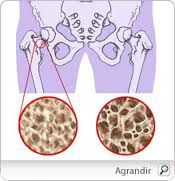18 Août 2011

ROYAL MONACO RIVIERA WEB MAGAZINE
______________________________
PAGINA WEB AMBASCIATA D'ITALIA NEL PRINCIPATO DI MONACO
►http://www.ambprincipatomonaco.esteri.it/Ambasciata_Monaco/
MEDICINE & CHINESE TRADITIONAL MEDICINE

Luigi Mattera is a certified by CERFPA (St. Laurent du Var-France) in HOMEOPATHY & ZUO TUINA MASSAGE OF TRADITIONAL CHINESE MEDICINE - Online certificate from TEXAS CHIROPRACTIC COLLEGE (Pasadena-Texas 2007) in CHIROPRACTIC SPORTS & CHIROPRACTIC TREATMENT OF GOLF INJURIES
@@@@@@@
PRESENTS:
Research article
Osteoporosis : Anamnestic risk factor questionnaire as reliable diagnostic instrument for osteoporosis (reduced bone morphogenic density)

BMC Musculoskeletal Disorders 2011, 12:187doi:10.1186/1471-2474-12-187
|
|
|
| Published: | 17 August 2011 |
Osteoporosis is a major health problem worldwide, and is included in the WHO list of the top 10 major diseases. However, it is often undiagnosed until the first fracture occurs, due to inadequate patient education and lack of insurance coverage for screening tests. Anamnestic risk factors like positive family anamnesis or early menopause are assumed to correlate with reduced BMD.
In our study of 78 patients with metaphyseal long bone fractures, we searched for a correlation between anamnestic risk factors, bone specific laboratory values, and the bone morphogenic density (BMD). Each indicator was examined as a possible diagnostic instrument for osteoporosis. The secondary aim of this study was to demonstrate the high prevalence of osteoporosis in patients with metaphyseal fractures.
76.9% of our fracture patients had decreased bone density and 43.6% showed manifest osteoporosis in DXA (densitometry) measurements. Our questionnaire, identifying anamnestic risk factors, correlated highly significantly (p=0.01) with reduced BMD, whereas seven bone-specific laboratory values (p=0.046) correlated significantly.
Anamnestic risk factors correlate with pathological BMD. The medical questionnaire used in this study would therefore function as a cost-effective primary diagnostic instrument for identification of osteoporosis patients.